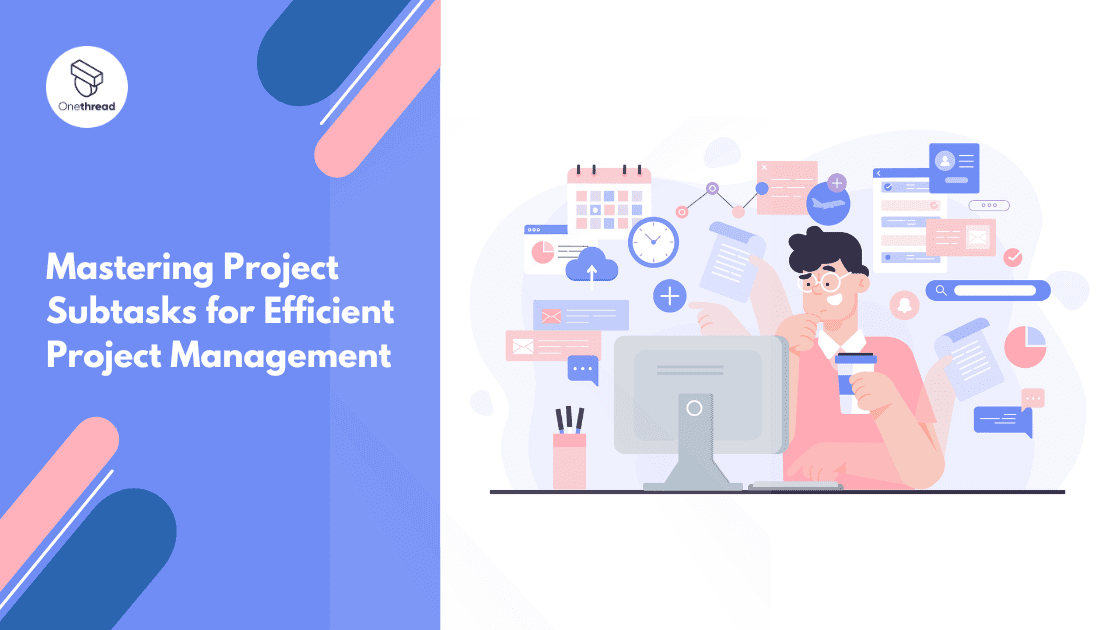As the digital landscape continues to evolve, the ‘Project Subtasks’ management methodology has carved out a niche for itself in the realm of project management. Research indicates that well-structured project management methodologies, including the use of subtasks, are employed in over 77% of high-performing projects.
Among these, the approach of subdividing tasks into smaller, more manageable units, “termed subtasks” is gaining prominence.
By breaking down tasks into subtasks, teams enhance communication clarity, improve task assignment accuracy, and bolster overall project efficiency. In this article, we will take a deep dive into the world of subtasks and unlock their potential to revolutionize your project management approach.
At the heart of any successful project lies a robust task management system. A project is essentially a series of tasks, each contributing to the achievement of the project’s ultimate goal.
Tasks are the fundamental units of work that need to be completed to achieve the overall project objective. They act as stepping stones that guide the journey from the project’s initiation to its successful completion.
Some Crucial Roles That Tasks Play in Project Management
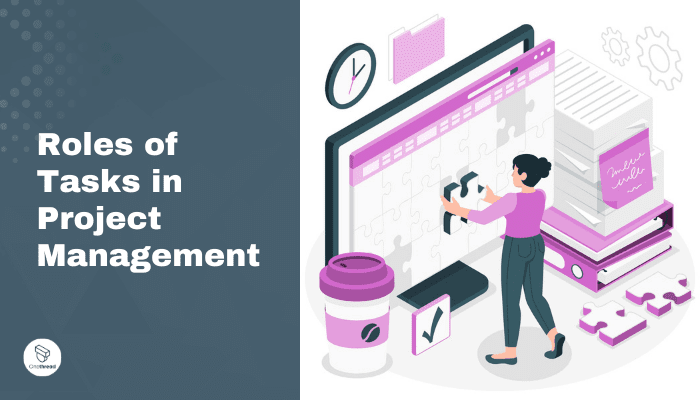
Structure and Organization: Tasks provide structure to a project by breaking it down into manageable parts. This hierarchical structure makes it easier to organize and track the project’s progress.
Defining Responsibility: Tasks make it clear who is responsible for what. They help assign duties to team members, ensuring everyone knows their roles and responsibilities. This clarity leads to improved productivity and less confusion.
Time Management: Tasks play a vital role in managing time effectively. By dividing the project into tasks, project managers can estimate the time required for each task, plan their schedule, and prioritize work accordingly.
Resource Allocation: Tasks allow for better resource allocation. By understanding the requirements of each task, project managers can assign appropriate resources, be they human, financial, or material.
Progress Tracking: By breaking a project into tasks, project managers can track progress more accurately. Each completed task represents a step closer to the project’s final goal, providing a visual representation of the project’s advancement.
Risk Mitigation: Identifying potential risks and issues becomes easier when a project is divided into tasks. Each task can be analyzed individually for potential problems, and preventative measures can be put in place.
Quality Control: Tasks help maintain the quality of work. By concentrating on one task at a time, team members can focus their efforts and maintain high standards.
Tasks form the backbone of project management, helping to guide the project from conception to completion. By breaking down a project into tasks, project managers can maintain control, ensure efficient use of resources, and successfully guide the team towards the project’s completion.
What Are Project Subtasks in Project Management?
In the framework of project management, subtasks are essentially divisions of main tasks, making them smaller, more manageable pieces of work. While tasks represent broader scopes of work, subtasks break these down further to simplify execution and management.
Why Do You Need to Understand Project Subtasks?
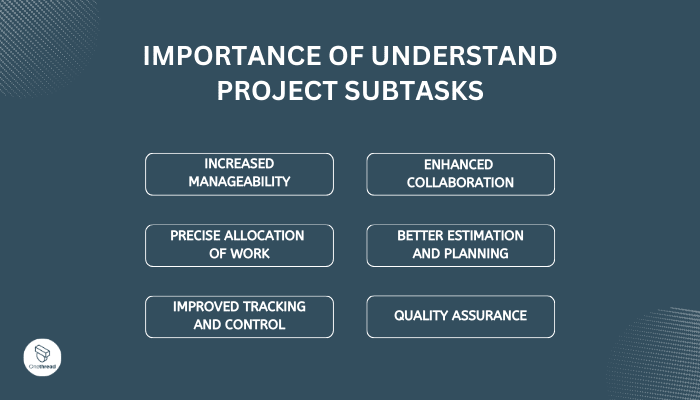
Understanding subtasks is critical to the concept of project management for several reasons:
Increased Manageability: A complex task can often seem daunting to the team. Breaking it down into subtasks makes it more manageable and approachable, thereby reducing anxiety and improving productivity.
Precise Allocation of Work: Subtasks allow project managers to assign specific pieces of work to team members based on their skills and availability. This precision in task assignment helps to optimize resources and ensures that everyone on the team has a clear understanding of their duties.
Improved Tracking and Control: Subtasks enable better tracking of progress and control over the project. By dividing tasks into smaller parts, it’s easier to monitor what’s been done, what’s in progress, and what’s still to do. This granularity helps to identify bottlenecks early and to take corrective action promptly.
Enhanced Collaboration: Subtasks foster collaboration within the team. When team members are assigned specific subtasks, they can focus on their work while also understanding how it fits into the larger project. This insight promotes effective communication and collaboration, as everyone is aware of how their role contributes to the overall goal.
Better Estimation and Planning: Breaking down tasks into subtasks can significantly improve the estimation of effort, resources, and time. By understanding the work needed at a micro-level, project managers can plan more accurately and mitigate the risk of project overruns.
Quality Assurance: With subtasks, it becomes easier to maintain the quality of work. Team members can focus on their specific parts, ensuring each piece is well done. This focus on detail can significantly enhance the overall quality of the project.
In essence, Subtasks are essential components of larger tasks, enhancing project manageability, resource allocation, collaboration, planning, tracking, and quality assurance. They’re vital for efficient project management, contributing to success.
Benefits of Using Subtasks in Project Management
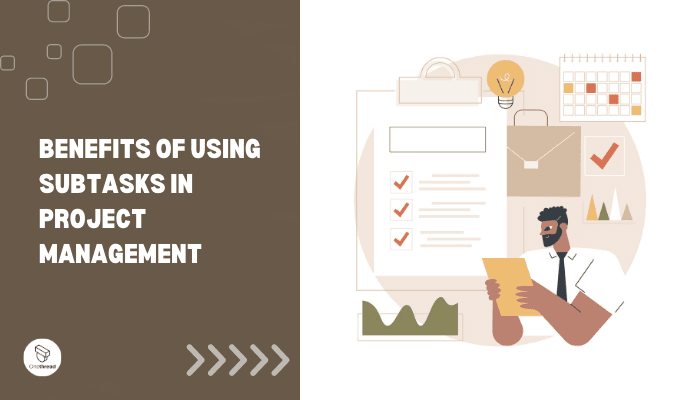
The use of project subtasks carries several benefits that contribute to efficient project execution and successful outcomes. Here are the main benefits of using subtasks:
Simplifying Complexity
Complex tasks can be daunting and hard to manage. Subtasks simplify these tasks by breaking them down into manageable parts. This simplification makes the work approachable and easy to understand, reducing the potential for errors and misunderstandings.
Facilitating Clear Assignments
Subtasks allow for a clear delineation of responsibility. They can be assigned to specific team members based on their skills and expertise, which not only optimizes the use of resources but also increases accountability and ownership among the team.
Improving Estimation and Planning
Estimating time, resources, and effort for a large task can be challenging. Subtasks make it easier to estimate these factors accurately because they are smaller and more defined. This improved estimation aids in precise planning and better project control.
Enhancing Progress Monitoring
Subtasks enable better tracking and monitoring of project progress. As each subtask is completed, the project manager can easily update the project status and identify any delays or issues promptly. This granular level of progress tracking helps maintain project schedule and quality.
Increasing Team Collaboration
When tasks are broken down into subtasks, team members have a clear understanding of their individual roles and how they contribute to the overall project. This clarity enhances collaboration and communication among team members, improving overall team performance.
Promoting Quality Assurance
Subtasks facilitate quality control. As team members focus on smaller pieces of work, they can maintain a high level of attention to detail, which improves the quality of work. Moreover, any issues can be identified and rectified at the subtask level before they impact the larger task or the overall project.
Using subtasks in project management simplifies complex tasks, facilitates clear assignment of work, improves project estimation and planning, enhances progress monitoring, increases team collaboration, and promotes quality assurance. These benefits collectively contribute to efficient project execution and successful outcomes.
Challenges and Solutions in Using Subtasks
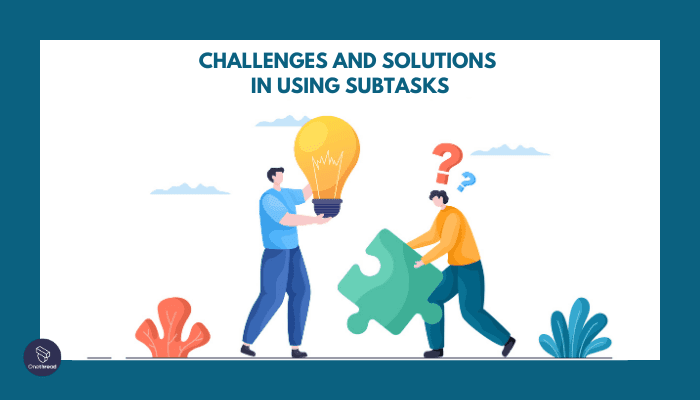
While using subtasks in project management brings numerous benefits, it also poses certain challenges. Here are some common issues and potential solutions:
Overcomplication
Too many subtasks can overcomplicate a project, making it difficult to manage and track. This often happens when tasks are broken down unnecessarily or when there’s a lack of clarity about the task’s scope. Solution: Only break down tasks into subtasks when necessary and beneficial. Ensure each subtask contributes to the completion of the main task and ultimately, the project goal. Maintain clarity about the scope of each task and subtask.
Loss of the Big Picture
With many subtasks, team members may lose sight of the overall project objectives, focusing too much on their individual pieces of work. Solution: Regular team meetings and updates can help keep everyone informed about the project’s progress and how their subtasks fit into the larger picture. Use visual tools like Gantt charts or project roadmaps to illustrate how each subtask contributes to the project.
Coordination Challenges
With multiple subtasks assigned to different team members, coordinating and synchronizing work can be difficult. Solution: Effective communication and the use of project management software can mitigate this issue. Tools like Onethread allow for real-time updates, notifications, and collaborative workspaces that facilitate coordination.
Dependency Delays
Some subtasks are dependent on others. If one subtask is delayed, it can delay others, affecting the entire project timeline. Solution: Early identification and proactive management of dependencies can help prevent such delays. Regular monitoring and status updates can allow for timely interventions and re-adjustments to keep the project on track.
Resource Overallocation
Subtasks can lead to resource overallocation if not managed correctly, with some team members overloaded while others are underutilized. Solution: Efficient resource planning and management can address this challenge. Balance workload evenly and adjust assignments as needed to prevent overburdening certain team members.
Micro-Management
With subtasks, there’s a risk of falling into the trap of micro-management, which can hamper productivity and team morale. Solution: Trust your team and give them the autonomy to complete their subtasks. Monitor progress, but avoid unnecessary interference in day-to-day work.
While subtasks can pose challenges, these can be effectively addressed with clarity, regular communication, efficient use of project management tools, proactive management of dependencies and resources, and a balanced management approach.
Differences Between Tasks and Subtasks
In project management, understanding the distinction between tasks and subtasks is crucial for successful project execution. While they both contribute towards project completion, they have distinct features and roles:
Level of Granularity
Tasks refer to a piece of work or an activity that contributes to the project’s completion. They are usually broader and are part of the project’s main structure. On the other hand, subtasks are the smaller components that constitute a task. They are detailed actions needed to complete a task. Subtasks provide a higher level of granularity, aiding in a more precise execution and tracking.
Size and Complexity
Generally, tasks are larger and more complex, encompassing a bigger piece of the project. They can sometimes be a project within a project. Subtasks, however, are smaller and less complex. They simplify the execution by breaking down complex tasks into manageable parts.
Dependency
Tasks are often independent of each other, meaning they can be worked on simultaneously or in any order without affecting others. However, subtasks are usually dependent on each other and need to be completed in a specific sequence to successfully complete the task.
Assignment
Tasks are often assigned to a team or a team leader, while subtasks are usually assigned to individual team members. This assignment helps in better resource allocation and increases accountability.
Duration
Tasks have a longer duration and span across the project timeline. Subtasks, however, have a shorter duration and can be completed in a relatively shorter span.
Scope
The scope of tasks is broader and impacts the project significantly. The scope of a subtask is narrower and directly affects the completion of the task it falls under.
Tasks are the bigger pieces of the project puzzle, while subtasks are the smaller, detailed pieces that fit together to complete the bigger picture. Understanding the distinction between tasks and subtasks allows for effective project planning, execution, and control.
Tasks vs. Subtasks: At A Glance
Feature | Tasks | Subtasks |
Level of Granularity | Broader components of project structure | Detailed actions within a task |
Size and Complexity | Larger and more complex | Smaller and less complex |
Dependency | Often independent | Usually dependent on each other |
Assignment | Assigned to teams or leaders | Assigned to individual team members |
Duration | Longer duration across project timeline | Shorter duration, completed sooner |
Scope | Broader impact on project | Narrower, affects completion of a task |
Role | Bigger pieces of the project puzzle | Detailed components that complete tasks |
How to Effectively Add Subtask in a Project: A Step-by-Step Guide
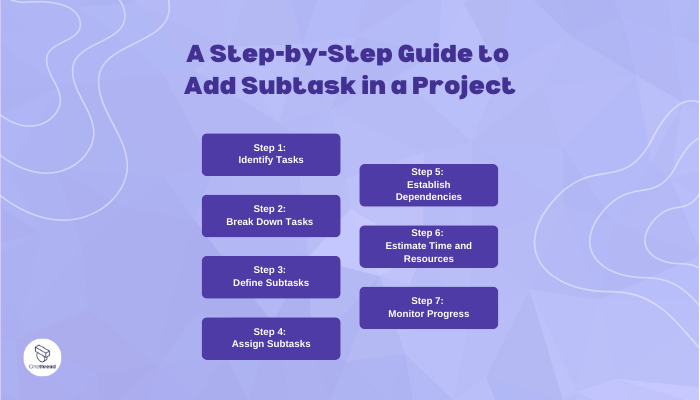
Adding subtasks to your project can greatly increase your control over the project’s progression and outcomes. Here’s a detailed, step-by-step guide on how to add subtasks effectively:
Step 1: Identify Tasks
Begin by listing all tasks necessary to complete the project. These tasks should be aligned with your project’s objective and contribute to achieving it. Ensure all tasks are well-defined and specific.
Step 2: Break Down Tasks
Examine each task and identify whether it can be broken down into smaller, more manageable parts. If a task can be completed by one person within a specific timeframe without interruptions, it likely doesn’t need to be broken down. However, complex tasks that involve multiple steps, require various skills or take longer time should be divided into subtasks.
Step 3: Define Subtasks
Each subtask should have a clear objective and be assigned a specific outcome. The subtasks should be small enough to manage and track easily but substantial enough to deliver meaningful progress toward the overall task.
Step 4: Assign Subtasks
Once the subtasks are defined, assign each subtask to the appropriate team member. Consider the skills required for each subtask and the availability of team members when making these assignments.
Step 5: Establish Dependencies
Determine if there are dependencies among subtasks, i.e., if certain subtasks need to be completed before others can begin. Define these relationships clearly to prevent bottlenecks or delays in your project.
Step 6: Estimate Time and Resources
For each subtask, estimate the time and resources required for completion. These estimates will help you allocate resources efficiently and create a realistic project timeline.
Step 7: Monitor Progress
Keep track of the progress of each subtask. This ongoing monitoring will help you identify any issues early and take necessary corrective action.
Wrap it up: Use Project Management Tools
Tools like Onethread can simplify the process of adding and managing subtasks. These tools allow you to assign subtasks, track progress, and communicate updates effectively.
Remember, adding subtasks to your project is not about creating more work; it’s about organizing existing work in a way that increases efficiency, transparency, and control. This step-by-step guide can help you add subtasks effectively to achieve successful project outcomes.
How To Use Project Subtasks In Onethread?
Onethread is a powerful project management tool designed to simplify and enhance your work processes. It makes creating, assigning, and managing subtasks straightforward. Follow the steps below to leverage Onethread’s subtask management feature:
Creating a Subtask
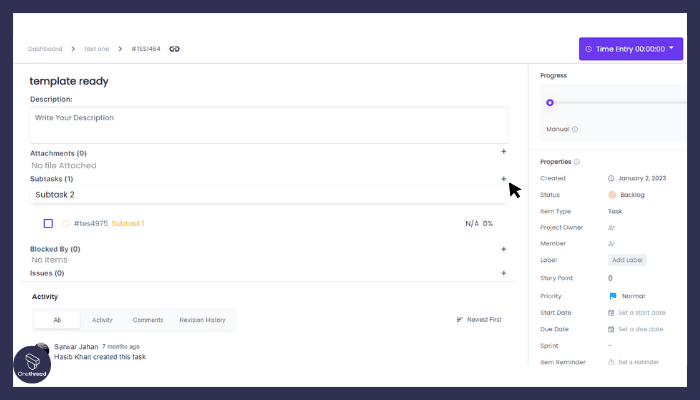
In Onethread, go to the task list and select the task under which you want to create a subtask. Click on the task to open its details. Here, you’ll find an option to add a subtask. Enter the subtask details, including the title and description, and click ‘Save’.
Assigning a Subtask
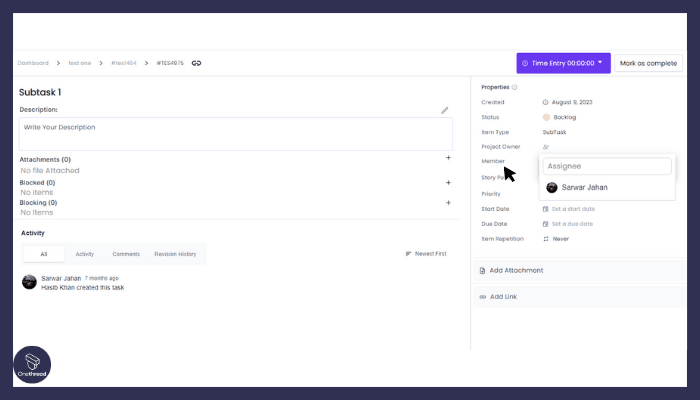
After creating a subtask, you can assign it to team members. In the subtask details, you’ll find an ‘Assign to’ field. Choose the appropriate team member from the dropdown list.
Setting Due Dates
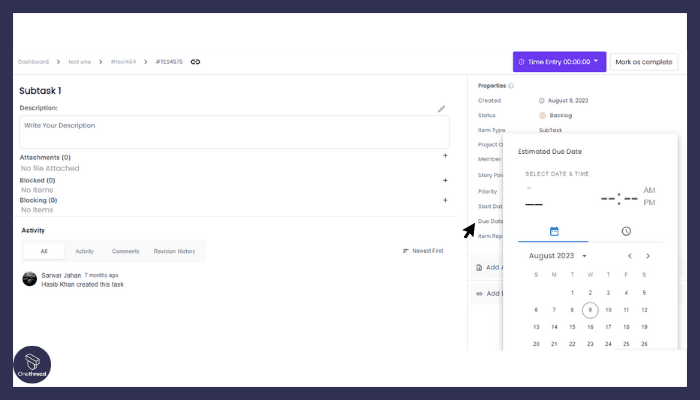
You can set a due date for each subtask to ensure timely completion. Use the ‘Set due date field in the subtask details.
Marking Subtask Completion
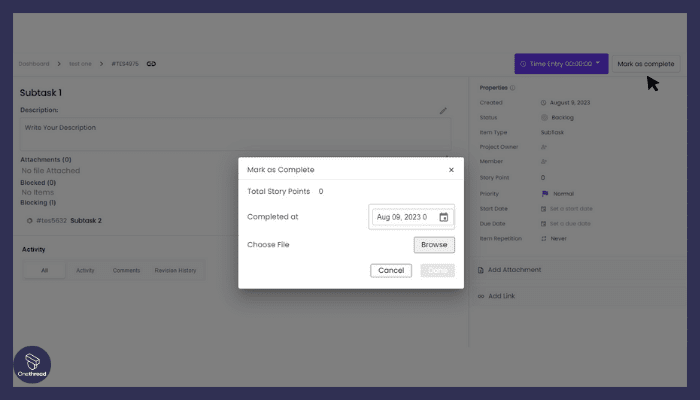
As team members complete their subtasks, they can mark them as complete in Onethread. This helps track progress and keep everyone updated.
Commenting and Collaboration
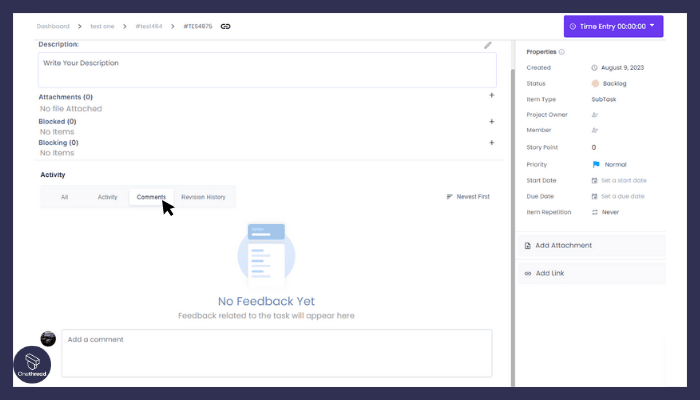
Onethread allows team members to comment on subtasks. This feature fosters collaboration and facilitates discussions related to the subtask.
Monitoring Subtask Progress
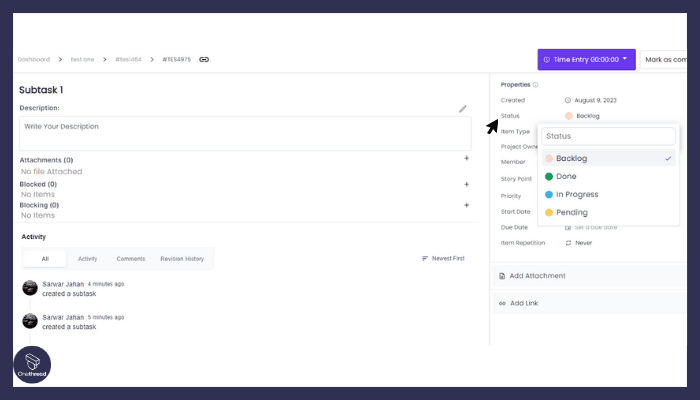
With Onethread’s dashboard, you can easily monitor the progress of subtasks. The tool provides visual representations of subtask statuses, helping you identify any delays or issues promptly.
Subtask Notifications
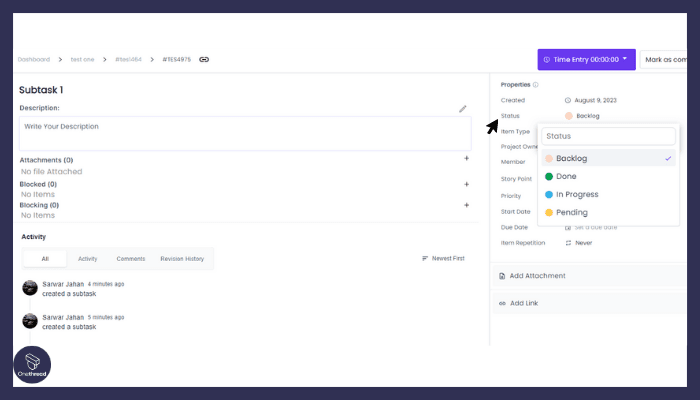
Onethread sends automatic notifications about subtask updates. This keeps you, and your team informed about changes and progress.
Subtask Dependencies
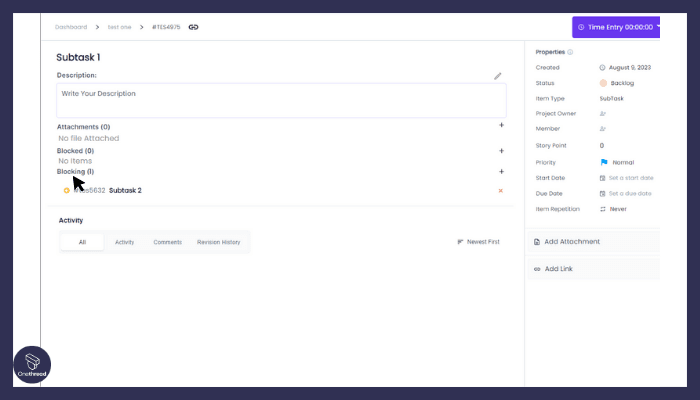
If a subtask depends on the completion of another, you can set this dependency in Onethread. This ensures that workflows in the correct order.
By integrating subtasks into your Onethread workflow, you can enhance your project management process, keeping your team coordinated and your project on track. Remember, the key to efficient subtask management is regular monitoring and clear communication, both of which Onethread facilitates excellently.
Wrapping Up
Understanding and utilizing Project Subtasks effectively can significantly enhance your project management efficiency. Subtasks provide a structure to projects, fostering clarity and boosting productivity by making sizable tasks more manageable.
Despite the occasional challenges, such as dependency complications and potential over-complication of tasks, the benefits greatly outweigh the difficulties, especially with the aid of robust project management tools like Onethread.
By creating, assigning, and managing project subtasks within Onethread, project managers can streamline processes, track progress accurately, and foster collaboration within the team.
So, embark on your journey of improving your project management practices by embracing the power of project subtasks and witness the transformative impact they bring to your projects.
